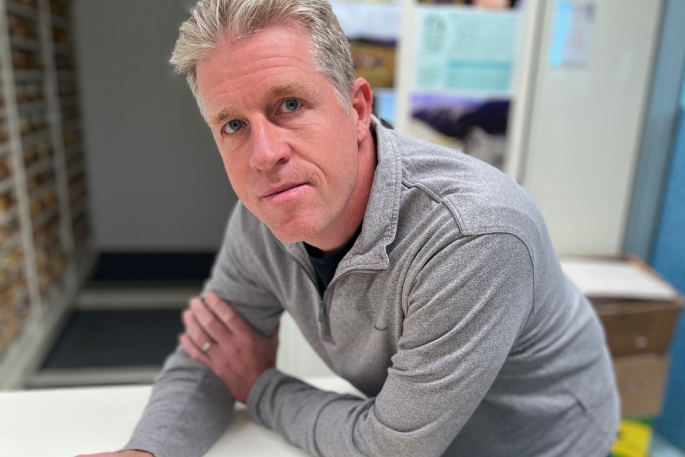Over 40,000 dried and pressed plants neatly filed in the University of Canterbury Herbarium make up a vital botanical library that dates back over 150 years.
Associate Professor Pieter Pelser from Te Whare Wānanga o Waitaha | University of Canterbury School of Biological Sciences has been the herbarium’s curator for 15 years.
He says most of the preserved specimens, which have been mounted on paper and stored inside manila folders, have been collected by UC staff and students.
One of the oldest specimens, a bidibid (piripiri in te reo), was collected in 1876.
There is also a seed collection with several hundred specimens that are currently being updated and put into a database.
Associate Professor Pelser says herbaria are a valuable resource documenting biodiversity through time and place.
“Here you can see the rich botanical biodiversity of Aotearoa New Zealand conveniently in one place. You can even study plants from populations that are now extinct and determine the genetic make-up of plants that lived decades ago.
“The herbarium is used to study how plant species have evolved, discover new plant species, and develop plant identification tools.
“The collection also allows us to determine which species and populations are rare and endangered so that we can study their genetic diversity and develop conservation management plans.”
He says UC students play an important part in such research and work together with researchers at the herbarium of Manaaki Whenua | Landcare Research to study extremely threatened plant species that only live in increasingly rare limestone habitats.
“A herbarium collection can also be used to find out when an invasive species first arrived in New Zealand, where it came from, and how it became distributed around the country.
“That makes it an essential resource for protecting both our environment and economy.”
The UC Herbarium is also culturally important to UC and tangata whenua because some of the plants were collected by historically significant botanists or are taonga species, he says.
Many of the specimens have come from a UC-owned field station in the Cass Mountain Research Area in North Canterbury.
Associate Professor Pelser takes botany students there on summer field trips as part of a field botany course to see rare plants on scree slopes and in other unique ecosystems.
“I love going up there and studying sub-alpine and alpine plant species,” he says.
The course is popular with undergraduate students and members of the workforce, including some employed by the Department of Conservation.
Associate Professor Pelser carries out botanical research projects in the Philippines with his wife, Dr Julie Barcelona, a research fellow at UC. Because of this connection, the UC Herbarium also has a small collection of Philippine plants.
Earlier this year, two new orchid species discovered in a remote part of the Philippines were named after Barcelona and Pelser to honour their contributions to citizen science.
“Studying plants in the wild as well as in herbaria are great ways for people of all walks of life to connect with and learn from nature,” says Associate Professor Pelser.



0 comments
Leave a Comment
You must be logged in to make a comment.